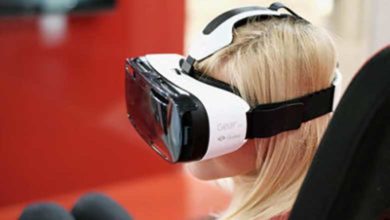Virtual reality expands its reach
Newly accessible virtual reality systems are delivering results in the therapist's office, research lab and beyond

A man steps up to the podium before a crowded auditorium. His hands are clammy and his throat feels dry. He glances at his laptop, reviewing the first slide of his presentation before taking a deep breath and starting his speech.
The experience is going well—so well, in fact, that the man’s psychologist,
Sean Sullivan, PsyD, decides he can push his patient further. Sullivan fiddles with the controls and before his patient’s eyes, the warm, welcoming audience transforms to a skeptical, unreceptive crowd. As the patient’s anxiety climbs, Sullivan coaches him through the relaxation exercises they’ve practiced.
Sullivan is the head psychologist at Limbix—a startup producing virtual reality therapy software to help treat anxiety-based disorders with exposure therapy, provide relapse prevention for substance abuse and teach mindfulness and relaxation. He also maintains a private psychotherapy practice in San Francisco. “Now that I’ve been using it in my own practice, I wouldn’t want to give it up,” he says.
The Limbix system is among a growing number of virtual reality platforms that psychologists are using to address phobias, post-traumatic stress disorder (PTSD), substance use disorders and more. Virtual reality therapy was first found to be effective more than 20 years ago, when Barbara Rothbaum, PhD, of Emory University School of Medicine, and colleagues demonstrated that virtual reality-based exposure therapy could help people overcome a fear of heights (American Journal of Psychiatry, Vol. 152, No. 4, 1995). In the last couple of years, the field has exploded thanks to newer systems that operate through cellphones, making them less expensive, more portable and a lot more practical than their predecessors. “Even 10 years ago, it cost $30,000 to set up a virtual reality rig, and it was big and clunky and limited. Now that virtual reality can be delivered through mobile technologies, you can do it on a cellphone with a $70 headset,” says Sullivan. “For the first time, it’s really accessible.”
As clinicians and researchers explore the many ways that virtual reality can be of use, it’s almost easier to ask: What can’t it do?








